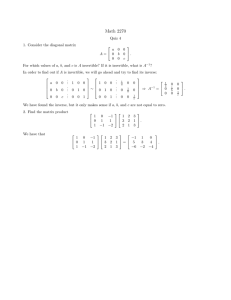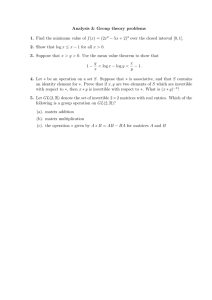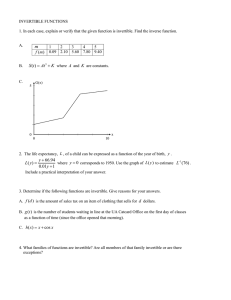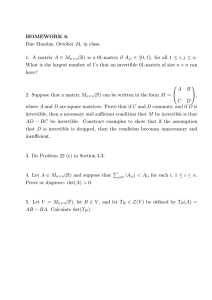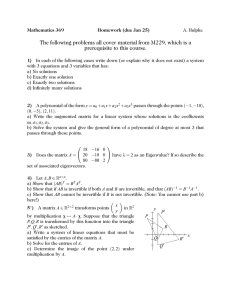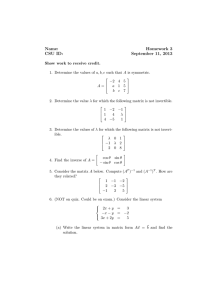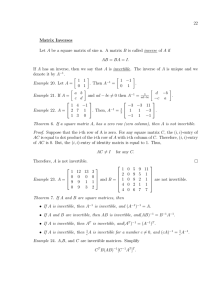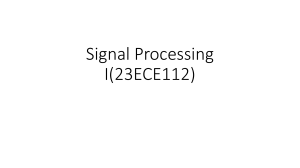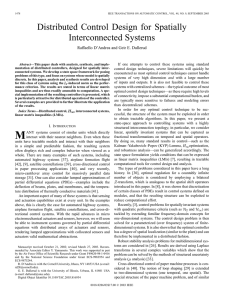1 T+B is never invertible for ‖B‖ sufficiently small References
advertisement
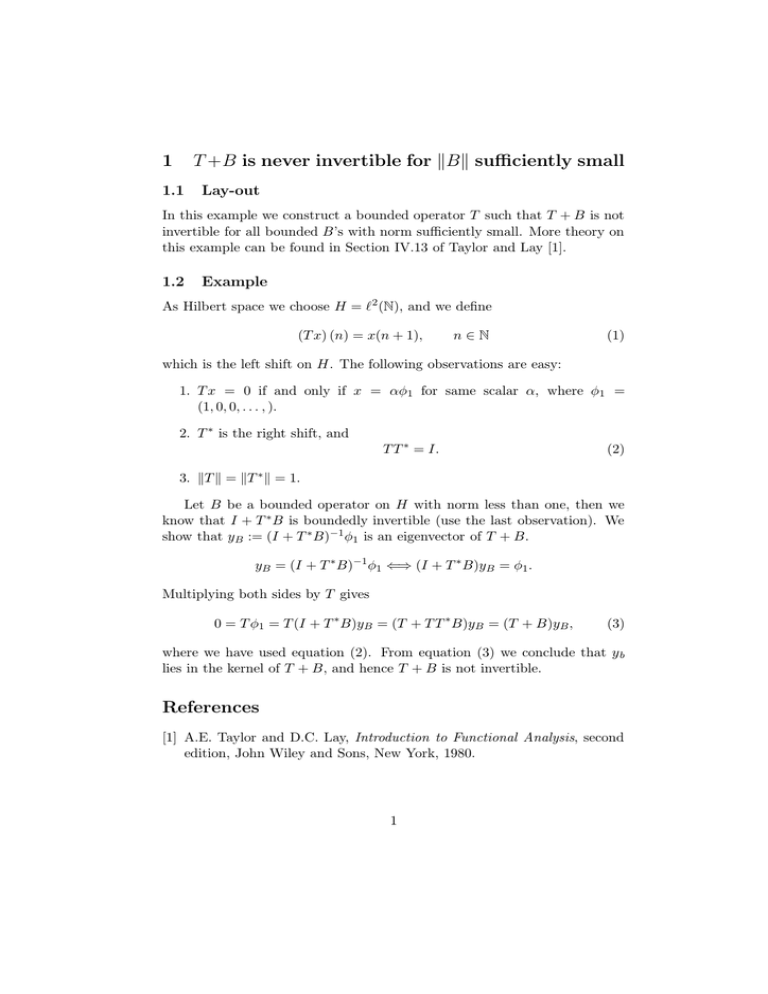
T +B is never invertible for kBk sufficiently small 1 1.1 Lay-out In this example we construct a bounded operator T such that T + B is not invertible for all bounded B’s with norm sufficiently small. More theory on this example can be found in Section IV.13 of Taylor and Lay [1]. 1.2 Example As Hilbert space we choose H = `2 (N), and we define (T x) (n) = x(n + 1), n∈N (1) which is the left shift on H. The following observations are easy: 1. T x = 0 if and only if x = αφ1 for same scalar α, where φ1 = (1, 0, 0, . . . , ). 2. T ∗ is the right shift, and T T ∗ = I. (2) 3. kT k = kT ∗ k = 1. Let B be a bounded operator on H with norm less than one, then we know that I + T ∗ B is boundedly invertible (use the last observation). We show that yB := (I + T ∗ B)−1 φ1 is an eigenvector of T + B. yB = (I + T ∗ B)−1 φ1 ⇐⇒ (I + T ∗ B)yB = φ1 . Multiplying both sides by T gives 0 = T φ1 = T (I + T ∗ B)yB = (T + T T ∗ B)yB = (T + B)yB , (3) where we have used equation (2). From equation (3) we conclude that y b lies in the kernel of T + B, and hence T + B is not invertible. References [1] A.E. Taylor and D.C. Lay, Introduction to Functional Analysis, second edition, John Wiley and Sons, New York, 1980. 1
